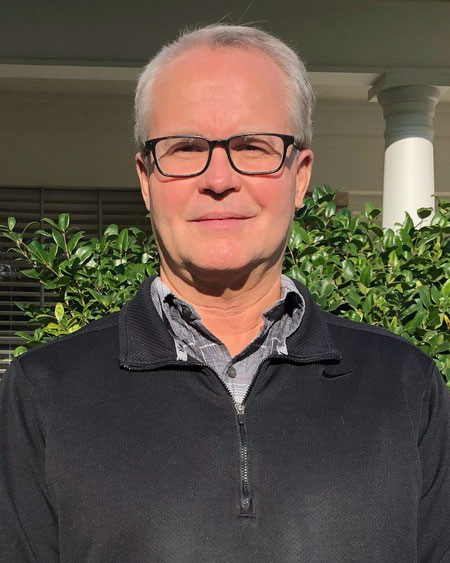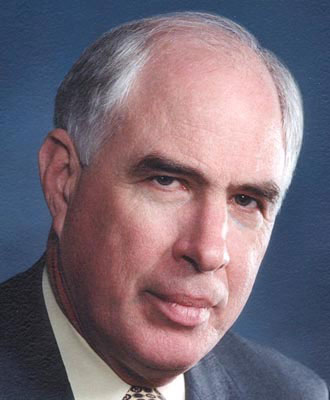Sun Wins Karcher Award, Two Professors Win Best Paper Awards
The Society of Exploration Geophysicists awarded faculty members from the University of Houston three different Honors and Awards for their contributions to geophysics and society.



Assistant professor of geophysics Jiajia Sun is one of three recipients of the J. Clarence Karcher Award. Professor of geology Paul Mann won the award for Best Paper published in the joint SEG and American Association of Petroleum Geologists journal “Interpretation” in 2020. Research professor of geophysics Leon Thomsen won Best Paper Presented at the 2020 SEG Annual Meeting.
All three professors are faculty members of the College of Natural Sciences and Mathematics’ Department of Earth and Atmospheric Sciences.
Sun’s Karcher Award is given “in recognition of significant contributions to the science and technology of exploration geophysics by a young geophysicist of outstanding abilities.” A maximum of three awards are given each year.
“I feel very humbled and honored,” said Sun. “There are many outstanding young geophysicists who are equally qualified. I also feel blessed by all the support, inspiration and encouragement that I have received from many people along the way. Without them, I would not have come this far. In addition, I feel a responsibility to help others, especially young students and professionals, the same way that I have been generously helped.”
Translating to Math
Sun is an expert already in joint inversion of multiple geophysical data sets. Similar to medical imaging, geophysicists use inversion to create three-dimensional images of the Earth’s subsurface. “However, creating images of the Earth is much more difficult than creating images of the human body,” said Sun.
For Earth imaging, geophysicists use constraints on geophysical inversion. These constraints can come from the measured, physical properties of rock samples such as density and electrical conductivity. But because the measurements are statistical in nature, they are challenging to convey in mathematical terms, Sun said.
He helped solve the problem through a cross-disciplinary approach; he borrowed a well-established method from the data mining and machine learning community known as “fuzzy clustering” and adapted this method into the standard inversion procedure.
“This new method, called clustering inversion,” Sun said, “has proven effective in improving the images created from geophysical inversions. It has paved the way for maximizing the value of petrophysical data in the process of building reliable models of the Earth.”
Mann Wins Back-to-Back Best Paper Awards
Paul Mann, Robert E. Sheriff Endowed Professor of Geology, has led an oil-industry consortium called “Conjugate Basins, Tectonics, and Hydrocarbons,”or CBTH, since 2011.
Mann and former consortium master of science student Eleine Vence, now a staff geologist with ConocoPhillips in Houston, won the 2021 Best Paper award in the SEG-AAPG journal “Interpretation” for their paper titled: “Subsurface basement, structure, stratigraphy, and timing of regional tectonic events affecting the Guajira margin of northern Colombia.”
The paper describes the complex geologic and tectonic history of the Caribbean margin using an integration of various types of subsurface and geophysical data. A key finding is that the Caribbean arc that Mann and other CBTH students had studied in Venezuela extends westwards beneath the Caribbean margin of Colombia.
“This paper took our knowledge from previous CBTH geologic studies in western Venezuela and projected it across the border into northern Colombia,” said Mann. “Geology does not respect political boundaries.”
In 2020, Mann and CBTH Ph.D. student Kyle Reuber won the same award for their paper on the rifted crustal structure of the South American and West African margins.
Overcoming Rejection
Thomsen’s paper titled “A logical error in Gassmann poroelasticity,” was rejected twice by the SEG before winning an award. It was denied without comment by reviewers for presentation at the 2019 SEG Annual Meeting, and it was rejected for publication in the SEG journal, Geophysics, after extensive review. Then, it received the award Best Paper Presented at the 2020 SEG Annual Meeting.
“This should inspire a young scientist, who receives discouragement upon finding results which contradict accepted wisdom, to persist in efforts to bring them public,” said Thomsen. “If the results are valid, the scientific community will eventually come to understand that.”
Thomsen’s paper addresses the well-known "Biot-Gassmann formula” which helps geophysicists interpret seismic data as they explore for oil and gas in the subsurface.
“This result had been accepted for 70 years as valid, despite very little experimental verification,” Thomsen said. “The paper points to an error in the theory and suggests ways to evaluate the revision to help geophysicists explore more effectively.”
In 2020, Thomsen received the Maurice Ewing Medal Award, SEG’s highest honor given to those who have made distinguished contributions both to the advancement of the science and to the profession of exploration geophysics.
The awards will be presented at IMAGE 2021, the joint SEG and AAPG meeting, September 26 through October 1 in Denver.
The SEG has a list of all previous award winners on its webpage.
- Rebeca Trejo, College of Natural Sciences and Mathematics